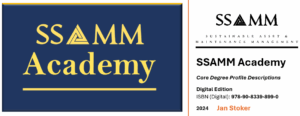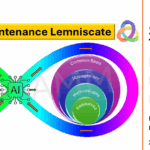While many industrial organizations were expanding PM efforts to nearly all other assets, the airline industry, led by the efforts of Nowlan and Heap, took a different approach and developed a maintenance process based on system functions, consequence of failure, and failure modes. Their work led to the development of Reliability-Centered Maintenance, first published in 1978 and sponsored by the Office of the Assistant Secretary of Defense (Manpower, Reserve Affairs, and Logistics). Additional independent studies confirmed their findings.
In 1982 the United States Navy expanded the scope of RCM beyond aircraft and addressed more down-to-earth equipment. These studies noted a difference existed between the perceived and intrinsic design life for the majority of equipment and components. In many cases, equipment greatly exceeded its perceived or stated design life.
The process of determining the difference between perceived and intrinsic design life is known as Age Exploration (AE). AE was used by the U.S. Submarine Force in the early 1970s to extend the time between periodic overhauls and to replace time-based tasks with conditionbased tasks. The initial program was limited to Fleet Ballistic Missile submarines. The use of AE was expanded continually until it included all submarines, aircraft carriers, other major combatants, and ships of the Military Sealift Command. The Navy stated the requirements of RCM and Condition-based Monitoring as part of the design specifications.
- Development of relatively affordable test equipment and computerized maintenance management software (CMMS) during the last decade has made it possible to: Determine the actual condition of equipment without relying on dated techniques which base the probability of failure on age and appearance instead of condition.
Track and analyze equipment history as a means of determining failure patterns and life-cycle cost. RCM has long been accepted by the aircraft industry, the spacecraft industry, the nuclear industry, and the Department of Defense (DoD), but is a relatively new way of approaching maintenance for the majority of facilities outside of these four arenas. The benefits of an RCM approach far exceed those of any one type of maintenance program.
RCM focuses on the following principles.
- Function-Oriented: RCM seeks to preserve system or equipment function, not just operability for operability’s sake. Redundancy of function through redundant equipment improves functional reliability but increases life-cycle cost in terms of procurement and operating costs.
- System-Focused: RCM is more concerned with maintaining system function than individual component function.
- Reliability-Centered: RCM treats failure statistics in an actuarial manner. The relationship between operating age and the failures experienced is important. RCM is not overly concerned with simple failure rate; it seeks to know the conditional probability of failure at specific ages (the probability that failure will occur in each given operating age bracket).
- Acknowledges Design Limitations: The objective of RCM is to maintain the inherent reliability of the equipment design, recognizing that changes in inherent reliability are the province of design rather than maintenance. Maintenance can only achieve and maintain the level of reliability for equipment which is provided for by design. RCM recognizes that maintenance feedback can improve on the original design. RCM recognizes that a difference often exists between the perceived design life and the intrinsic or actual design life, and addresses this through the Age Exploration (AE) process.
- Safety, Security, and Economics: Safety and security must be ensured at any cost; life-cycle cost-effectiveness is a tertiary criterion.
- Failure as Any Unsatisfactory Condition: Failure may be either a loss of function (operation ceases) or a loss of acceptable quality (operation continues). See Figure
- Logic Tree to Screen Maintenance Tasks: This provides a consistent approach to the maintenance of all equipment. See Figure
- Tasks Must Be Applicable: Tasks must address the failure mode and consider the failure mode characteristics.
- Tasks Must Be Effective: Tasks must reduce the probability of failure and be cost-effective.
Click to enlarge
Three Types of Maintenance Tasks
Tasks are time-directed (PM), condition-directed (PT&I directed), and failure-finding (one of several aspects of Proactive Maintenance). Time-directed tasks are scheduled when appropriate. Condition-directed tasks are performed when conditions indicate they are needed. Failure-finding tasks detect hidden functions that have failed without giving evidence of failure and are normally time directed. Run-to-Failure (RTF) is a conscious decision and is
acceptable for some equipment.
Living System
RCM gathers data from the results achieved and feeds this data back to improve design and future maintenance. This feedback is an important part of the Proactive Maintenance element of the RCM program. Note that the maintenance analysis process, as illustrated in the figure, has only four possible outcomes:
- Perform Interval- (time or cycle) based actions.
- Perform Condition-based (PT&I directed) actions.
- Perform no action and choose to repair following failure.
- Determine no maintenance action will reduce the probability of failure and
failure is not the chosen outcome (Redesign or Redundancy).
Regardless of the technique used to determine the maintenance approach, the approach must be reassessed and validated. Figure depicts an iterative RCM process that can be used for a majority of NASA facilities and collateral equipment.
Back to post: Click Here or follow Sustainable Asset Management
Source:
– Article: NASA RELIABILITY-CENTERED MAINTENANCE Guide For Facilities and Collateral Equipment
– Body of thoughts: https://lnkd.in/eDWiQzYR
– Page https://maincontract.nl/newsandpublications/
– Green Box ‘Consulted Articles & Literature’
– Select ‘Maintenance Management’.











































